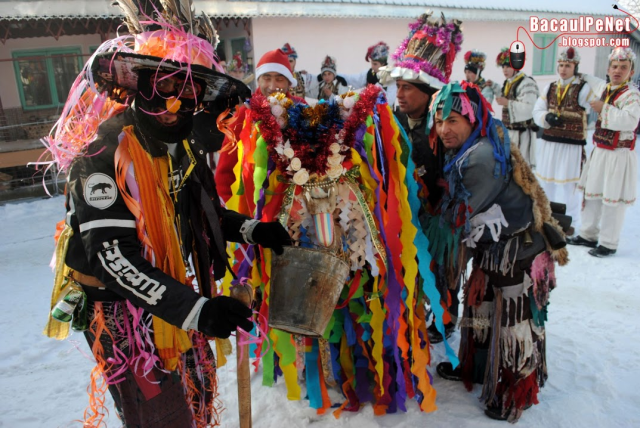Located in northern Romania, Maramureș
County is an area with plenty of tourist attractions, largely due to its
landscapes, its ethno-folk legacy and local hospitality. Over the centuries,
the surrounding forests have provided the local population with the raw
materials to defend their area and develop a genuine timber civilization.
Evidence of that are the wooden churches and the grandiose traditional wooden
gates, which are genuine works of folk art. Our guide today is Petru Daniel Măran,
the director of the Sighetu Marmației Center for Information and Tourism.
The best starting point for
visiting the area is Sighetu Marmației, which starting last year is a resort
of local interest. The city was first documented in 1326. Over the years it was
a princely see, an administrative center of Maramureș shire and a county residence. Tourists visiting Sighetu Marmației
can opt for a large plethora of tourist objectives and cultural events. The
city’s museums are the most important: the Communism Victims and Resistance
Memorial, the Maramureș Village Museum, the Ethnographic Museum, the Elie
Wiesel Jewish Culture Museum, the Museum of History, Archaeology and Natural
Sciences, the Dr. Ioan Mihalyi de Apșa Memorial House. The city’s anthropic heritage
is exceptional. The city has 99 historical monuments, of which most are old
buildings or architectural ensembles. Starting 2017 Sighetu Marmației has been listed
as a European destination of excellence. The city was enrolled in the
competition in the movable cultural tourism section. I am happy to invite you
to visit Sighetu Marmației this December, although unfortunately, due to health
safety restrictions in place, we won’t be able to observe the traditional
winter pageant held as part of the Marmiția Festival. We do have an ongoing Christmas
fair, held over December 5-26. Every weekend, groups of carolers will perform
live in front of the Christmas tree for all guests at the fair.
We continue our journey in Maramureș
County, and Petru Daniel Măran told us what else is worth seeing in Maramureș.
For starters, I would suggest
a trip to Săpânța village, on Tisa Valley. The first objective here is the
Merry Cemetery. This cemetery is a genuine museum of folk art. In 1935, Stan Ioan
Pătraș started sculpting the first crosses that earned Săpânța its fame. The
vividly painted crosses depicting caricatures from the lives of the departed
turned the cemetery into a living chronicle of the local community. And while in
Săpânța, you should also visit the artist’s memorial house. Another major
objective, which brings in many tourists every year, is the Săpânța-Peri
monastery, situated in a lovely oak forest called Dumbrava. Tourists should
also plan a visit to the wooden churches, which make Maramureș so famous. Many
of these churches are clustered in villages on Iza, Mara and Cosău river
valleys. I recommend a visit to the wooden churches in Desești, Budești,
Bârsana, Poienile Izei and Ieud, which are all UNESCO World Heritage sites.
Tourists can also stop at BârsanaMonastery, known for its traditional wooden
architecture. In terms of accommodation, you should try booking a stay in Breb,
Botiza, Ieud and Oncești villages, which all preserve the architecture, garments
and customs specific to Maramureș. Once here, you can also visit the Ocna
Sugatag spa resort, known for its therapeutic benefits.
Petru Daniel Măran, the
director of the Sighetu Marmației Center for Information and Tourism, also recommends
booking a trip on the narrow-gauge train known as mocăniță in Vișeul de Sus. The
steam-powered train goes up the Vaser Valley and offers tourists a panoramic
view, highlighting the region’s beautiful scenery and cultural richness. In
winter time, tourists also have a number of leisure time opportunities at their
disposal.
It snows a lot in wintertime here, and the place is ideal for winter
sports. You can ski in Borșa Complex, Prislop Pass, Izvoare or Cavnic resorts.
Hikers can opt for low-difficulty trails in the nearby hills, linking one
village to another in a picturesque setting. The most spectacular trails are
those in Rodna Mountains, with altitudes exceeding 2,000 meters at times. Besides,
local guesthouses often offer carriage or horse-drawn sled rides. The winter
holidays are a good opportunity to showcase the region’s traditions and customs.
Usually, in December, a number of cultural events take place, but due to the
global pandemic, the events were adjusted this year in order to offer both participants
and hosts a high degree of protection. Our guesthouses are always full around this time of the year, which is telling of local hospitality. Once they get
here, tourists will spend a lovely time and I guarantee they will be delighted.
There are many projects aimed at developing tourism in Maramureș, our guide today, Petru Daniel Măran,
has told us.
Some projects are aimed at
developing ski slopes, others to improve hiking trail markings or rehabilitate
the local heritage in villages. I can go through the specifics of a number of projects
in Sighetu Marmației, where we want to rehabilitate a number of buildings that
are either home of museums or are historical monuments. Right now, we are
implementing a cross-border project to renovate the Elie Wiesel Memorial House.
We also have a plan to set up tourist promotion panels and come spring we will
start refreshing markings on tourist trails around the city. I wish you Happy
Holidays and invite you to visit Maramureș and discovery yourself all the
marvels of this area.
The invitation has been made
so make sure you put down Maramureș on the list of destinations in Romania if you
plan on visiting soon. (VP)

